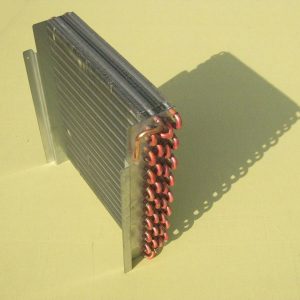There are some things that can make a home smell quite unpleasant and damp air is one of them. Whether you have a dampness problem within your building (penetrating or rising dampness) or your moisture is the result of drying laundry inside or cooking (condensation), it can result in a horrible musty smell with mold growing on your walls and a higher risk of respiratory illness.
So what can you do to avoid this problem? One solution is to invest in a good quality humidifier – an electronic appliance that removes the moisture from the air.
Let’s find out how they work!
How Do Dehumidifiers Work?
Dehumidifiers remove excess moisture and dampness from the air and create living conditions that are inhospitable to mold, dust mites, and other allergenic organisms. But how do they regulate humidity? What is the mechanism that allows these devices to turn moisture in the air into liquid water?
There are two types of dehumidifiers that remove moisture from the air around us:
- Refrigerant Dehumidifier
- Desiccant Dehumidifier
Refrigerant Dehumidifier
The coils inside the refrigerant dehumidifier are colder than the air around them. When the air passes through these coils it becomes colder and its ability to retain and hold moisture falls. Water condenses on the coils and drips into a bucket or pan for disposal.
The now cooled air flows back over the warm dehumidifier motor so that it is slightly reheated before being released back into the room. This warm air going out of the dehumidifier is dry, which is more likely to attract moisture and maximize the dehumidifier’s efficiency.
As the water collection bucket fills up, a plastic float in the machine rises upwards. Once the tray is full, this float activates an electric switch that turns off the fan. An indicator light switches on, telling you it is time to empty the bucket.
Desiccant Dehumidifier
This electrical appliance uses an absorbent material to extract water from the air. The material is then heated, causing the moisture to drip into the water tank. These dehumidifiers are designed to work better in lower temperatures such as a garage or a conservatory.
However, as compared to refrigerant dehumidifiers, desiccant dehumidifiers tend to use more energy because of the process of warming the absorbent material.
Once you plug in the dehumidifier, it will start to remove moisture that has accumulated in the carpet, wall linings, and furnishings. Therefore, it is important to let it run continuously for the first few weeks. Once the room achieves the desired humidity level, you can use the dehumidifier only when you are in the room in order to maintain this healthy level.
What Are The Components of a Dehumidifier?
Most dehumidifiers have the following components:
Air Filter
The air filter is located behind the grill in the dehumidifier. It traps dust and debris present in the air that could cause contamination of the evaporator fans and condenser coils.
Collection Bucket
This is a container that is located under the evaporator. It collects the condensate water from the evaporator.
Compressor
This is a pump that compresses the refrigerant gas which runs through the evaporator to start the water extraction and cooling process. This compressed refrigerant gas passes through the condenser where it cools and condenses into a liquid. This liquid refrigerant then moves to the low-pressure evaporator where it evaporates and absorbs the heat from the air moving into the evaporator fins starting the cooling process.
Condenser
The condenser in a dehumidifier is the heat exchanger that cools down the hot, high-pressure refrigerant gas by changing it into liquid. This liquid then flows through the low-pressure evaporator where it evaporates. During this process, the refrigerant absorbs heat from the air blowing across the evaporator fins. Cooling the refrigerant in the condenser helps increase the efficiency of this heat exchange process in the evaporator.

Condenser coil of a dehumidifier (Source)
Electronic Control Board
The electronic control board in the dehumidifier controls all the major electro-mechanical components. It monitors input from the humidistat and activates the compressor when humidity in a room exceeds the level set by the user. It also shuts off the compressor in case of excessive frost build-up on the evaporator.
Once the fins are clear of the frost and the condensate water drips into the collection basket, the electronic control board restarts the compressor to continue dehumidification if needed.
Fan
The evaporator fan helps in cooling and dehumidification by blowing air across the condenser’s heat exchangers and evaporator.
Evaporator
The evaporator cools the air and condenses the water present on its fins to dehumidify the room.
Humidistat
This is a sensor which detects the percentage of humidity or the amount of water vapor in the room. It uses a wire harness connection to provide input to the dehumidifier’s electronic control board.
Conclusion
Buying a dehumidifier will help you improve the entire atmosphere of your home. It will get rid of mildew, algae, mold, allergens, and any unpleasant and heavy odors that plague many homes. The above article not only gives you detailed information about the components of a dehumidifier and how it works, but also provides information about two dehumidifiers that we find are the best, based on our testing process.


